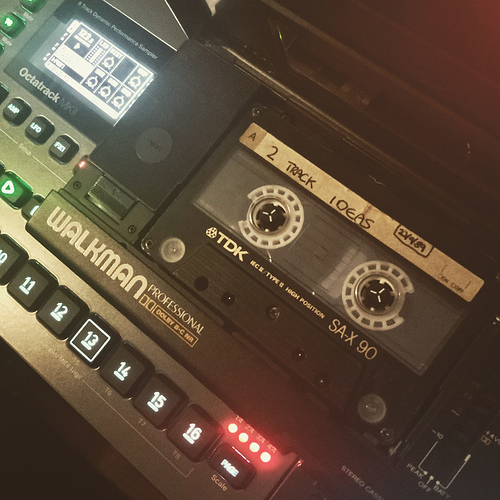I have some old tapes of acid house and techno I made when just starting out in the late 80’s, back then all I had was a Roland TB-303, TR-606, MC-202, SH-101, Yamaha VSS-200 sampler, WEM copicat, EH electric mistress deluxe, Korg Poly 800, and a Amstrad Studio 100 cassette 4 track. I was quite productive with that little setup, and it remains a very fondly remembered time for me.
Some of the tracks are not too bad, but the tapes were not always recorded well, not always good quality tapes, and some of the tracks have dropouts and age related issues.
The Amstrad wasn’t the best 4 track to say the least, but still it got the job done. Anyway I’m quite fond of the tapes and some of the tracks, I am concerned that they probably won’t last very much longer, so I recorded them to digital to preserve them.
I also decided to collaborate with my younger self, I was new to making music and could have done with a mentor back then, so I thought I’d remix some of them using the Octatrack. The remixes will range from cutting out the crap bits and a general clean and polish (as much as is possible given the scope of the project) to reworking them and adding new parts.
So the tempo of the tracks fluctuates a bit as expected, caused by a combination of TR-606 analog clock master, recorder motor speed fluctuations, and stretched tape, so bpm is not precise - OT to the rescue!
I decided to sample sections then slice them, so far I have only started on the first track, the biggest undertaking of the lot, 40 sections mostly of 4 bars, although there are a few shorter ones and a long section too. So for the 4 bar sections I painstakingly sliced them all up, into 16, mainly because they are 4/4 and it means that I can tidy up the timing without losing too much feel. I averaged the tempo of the clips and set the project tempo accordingly, not using timestretch as it does not sound good enough on the material.
I have never used the Octatrack in this capacity before, so it has been a good exercise in how to approach the various challenges and logistics as well as something to get my teeth into, so to speak.
So far I have been enjoying the process, and it has been a lot of fun revisiting these 31 year old recordings, I intend to compile them into an album, make some artwork and get some cassettes made when finished. 

 Well, compared to now, no reverb or midi etc.
Well, compared to now, no reverb or midi etc.

